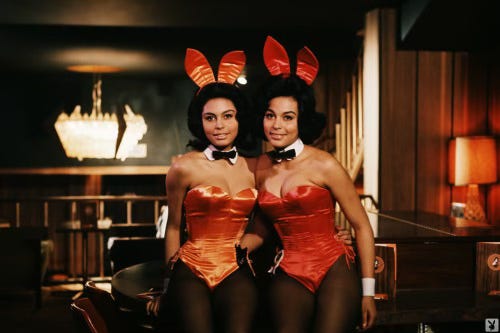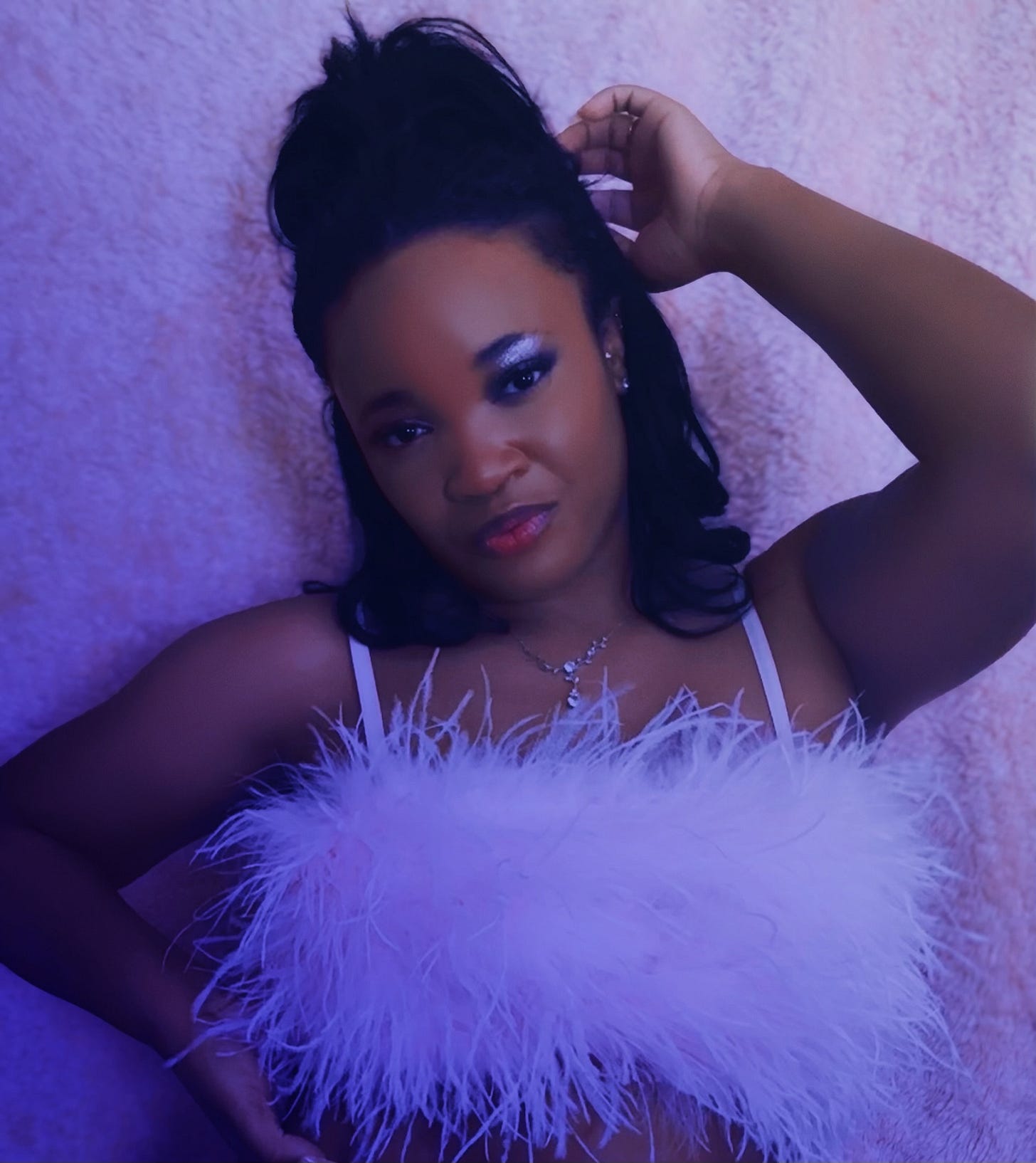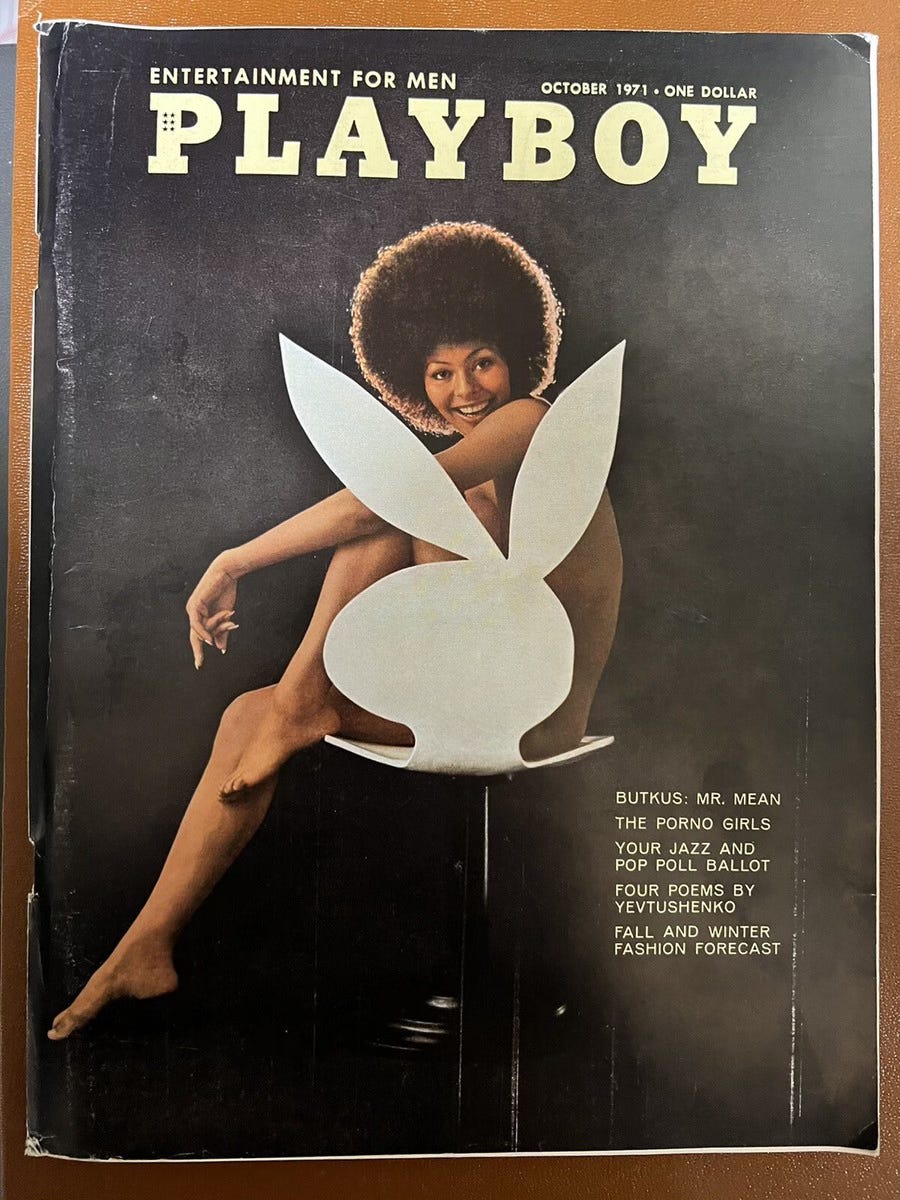Why Playboy? 🐇🪩
A Brief Analytical Reflection from Yours Truly 💜
Hi guys! 💕
I know it’s been a while, but I wanted to tell you that I made it to the Quarter Finals for Playboy’s latest talent search! If I win, I could be featured on the Inside Cover of their magazine or even become Playmate of the Year!
This may seem random to my newcomers, and not-so-random for those who have followed me for a while. But this journey is deeply personal in more ways than one, and I’m inviting you into my world to share.
Playboy: A Brand, A Movement, A Lifestyle
Playboy has a long history of celebrating the vast and varying beauty of women. Not just in how we look, but in how we express ourselves. From its earliest issues, it wasn’t just a magazine; it was a cultural space where women could be bold, artistic, and unapologetic about their sexuality. That spirit still exists today with their latest project, The Playboy Club, a digital platform that’s quickly curating a community where modern-day ideals of sexual identity thrive. As a Playboy Creator, I appreciate how the platform lets us tell our stories in our own way. Every contributor has a unique angle, and the platform celebrates it.
Playboy began in 1953, during a time when America was buttoned-up, conservative, and terrified of women’s freedom. The idea that a woman could pose nude because she wanted to, and not because she was forced to, was shocking. That was Playboy’s rebellion. It wasn’t just about naked bodies; it was about choice.
Over time, Playboy pushed boundaries in ways that are often overlooked. It featured interviews with civil rights leaders like Malcolm X and Martin Luther King Jr., published groundbreaking journalistic pieces, and gave space to artists, writers, and thinkers who challenged social norms. It also gave contemporary women a platform to embrace their sexuality without apology, long before words like “sex-positive” were a thing.
From its rebellious beginnings in print to the digital freedom of The Playboy Club today, the core mission remains the same: celebrating women’s autonomy, creativity, and self-expression. Playboy has grown from a magazine to a permanent fixture in pop culture because of its daring approach to highlighting what most try to leave in the dark. You can’t talk about cultural evolution , or revolution, without mentioning Playboy.
Black Women, Beauty, and Visibility in Playboy
Since slavery, Black women in the United States have been burdened by dehumanizing stereotypes designed to control and justify racial and sexual oppression. One of the most enduring is the “Jezebel” caricature which portrayed Black women as innately lascivious, promiscuous, and sexually available.
This stereotype served several strategic purposes during slavery and beyond:
To justify sexual violence: Enslavers claimed that Black women “couldn’t be raped” because they were “always willing” or “provocative.”
To deny trauma: By framing sexual violence as consensual or “deserved,” it erased the reality of assault and stripped Black women of the right to be seen as victims.
To enforce social control: After emancipation, this narrative persisted to punish Black women who expressed sexuality outside narrow norms of respectability.
Prominent scholars such as Patricia Hill Collins, bell hooks, and Melissa Harris-Perry have written extensively about this. Collins, in Black Feminist Thought, explains that the Jezebel image denied Black women the right to sexual self-definition (1990).
Many Black women have experienced what psychologists call racialized sexual trauma: a trauma shaped, not only by personal violation, but also by historical narratives that distort and shame Black womanhood.
As a result, generations of Black women were socially conditioned to perform modesty to avoid being labeled, judged, or made targets even when that meant suppressing natural sensuality or self-expression.
Part of reclaiming sexual expression and autonomy for Black women is putting our beauty on full display, celebrating it where history tried to erase, silence, or confine it. Playboy has always supported this effort. Features from Jennifer Jackson, Jean Bell, and Darine Stern broke barriers for Black women in the reclamation of our personal identities.

Positionality: How This All Relates to Me
Keep reading with a 7-day free trial
Subscribe to Raena Updates to keep reading this post and get 7 days of free access to the full post archives.




